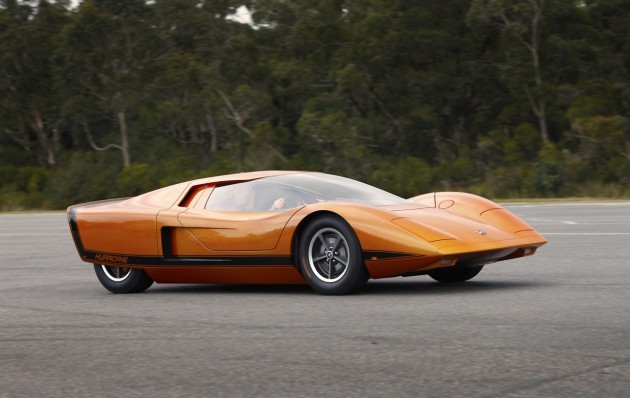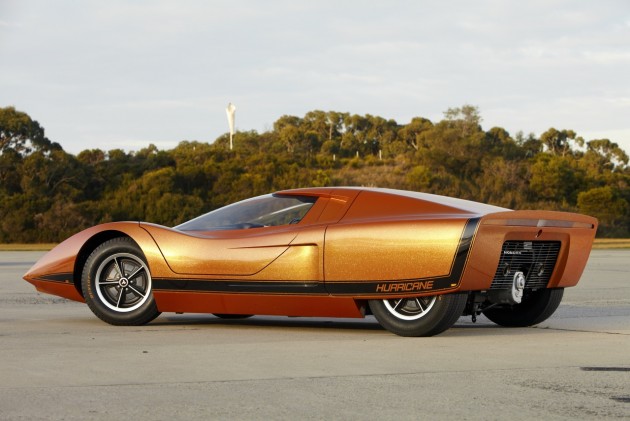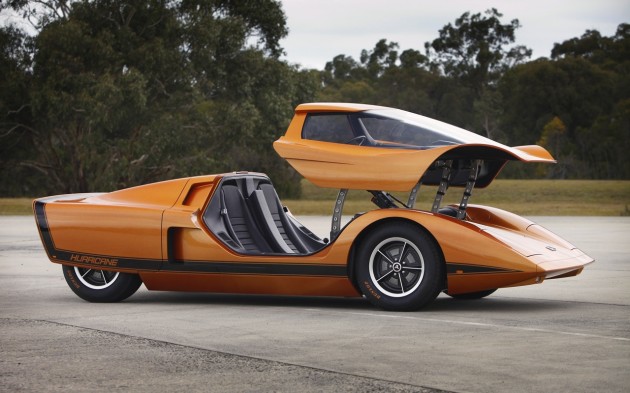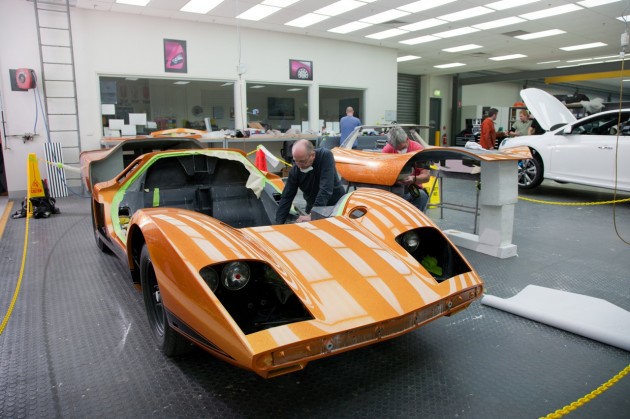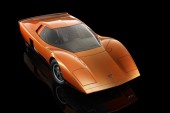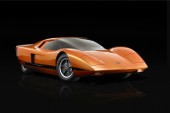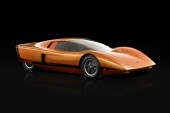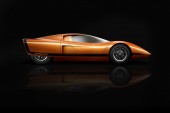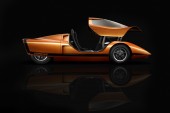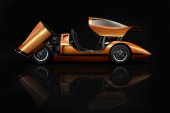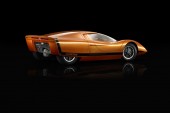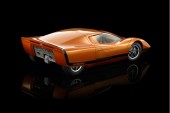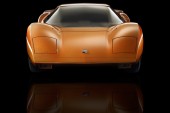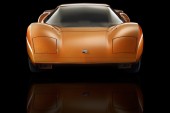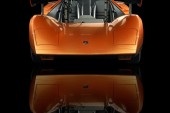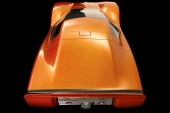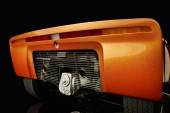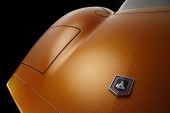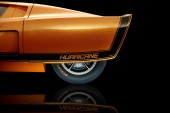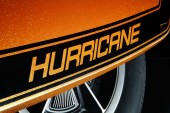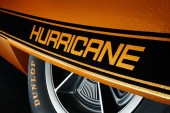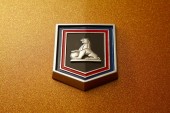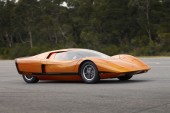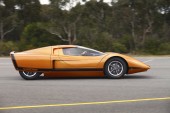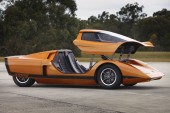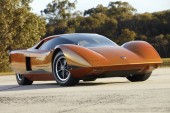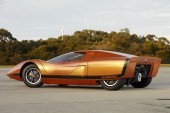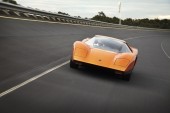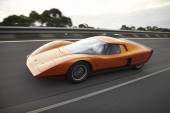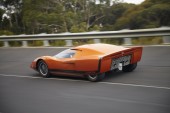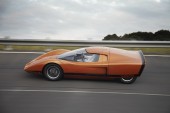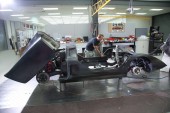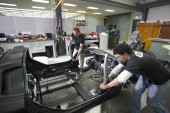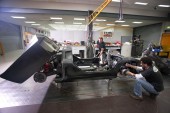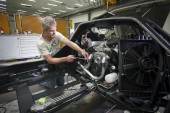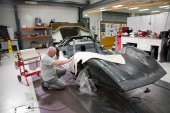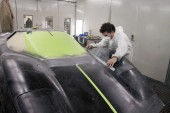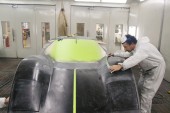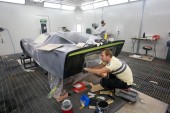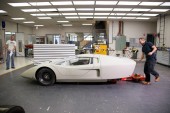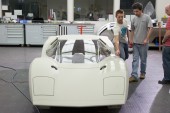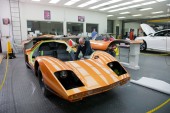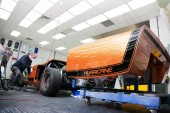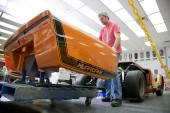Holden has restored its very first concept car, the 1969 Holden Hurricane, code named RD 001.
The 1969 Holden Hurricane Concept is a mid-engined, two-seater, rear-wheel drive supercar that was equipped with an assortment of state-of-the-art features. It was originally described as a bit of an experiment “to study design trend, propulsion systems and other long range developments”.
Some of the 1969 Holden Hurricane Concept’s highlights include: electronic digital instrument displays, station-seeking radio, automatic temperature-control air-conditioning, a rear-vision camera and an automated route-finder – a Sixties version of GPS sat-nav. Was Holden using a crystal ball?
Prior to the restoration, Holden hadn’t had its hands on the 1969 Holden Hurricane Concept for quite some time. Instead, it was kept at a trade school where (you’ll cringe when you read the next bit) apprentices practised welding on the irreplaceable concept.
The 1969 Holden Hurricane Concept was returned to Holden back in 2006, where it underwent literally thousands of hours of work. And the end result is nothing other than perfection.
The restoration process of the 1969 Holden Hurricane Concept became a side-project for devoted Holden employees (including Holden designers and engineers) – nearly all the work was done in their personal time. Now that’s dedication.
Holden’s Manager for Creative Hard Modelling, Paul Clarke, has been largely responsible for managing the restoration of RD 001. He ensured as many of the original parts as possible were used or remade using modern techniques to 1969 specification, in order to preserve the authenticity of this hugely important Holden. Clarke says,
“The entire team has done a fantastic job in bringing this beautiful concept back to life.
“The talent we have within the Holden organisation is simply outstanding. Every time we take on a project I’m constantly amazed by the passion and talent in this company, making it a genuine pleasure to work on these projects.
“The Hurricane plays a crucial role in Holden’s story and the company has such a great sense of history and heritage that it was very important to bring RD 001 back to life. It’s been a challenging but incredibly rewarding process.”
Executive Director GMIO Design, Michael Simcoe, said it was fantastic to see such a significant vehicle restored.
“At Holden we have always prided ourselves on our ability to look into the future through our concept cars.
“It’s amazing to think that the features we take for granted today were born out of creative minds over 40 years ago.”
Michael Simcoe added the Hurricane holds a particularly special place in Holden’s history as it kick-started Holden’s long love affair with concepts, including the Holden GTR-X, Torana TT36, Coupe 60, the GMC Denali XT (which was requested specifically by GM for the North American market) and the award-winning EFIJY.
The code name RD 001 stipulates that 1969 Holden Hurricane was the first concept of the GMH Research and Development organisation. The small team consisted of engineers and an Advance Styling Group working at the Fishermans Bend Technical Centre.
The 1969 Holden Hurricane Concept stands 990mm tall, and rather than using conventional doors, it uses a hydraulically-powered canopy. The canopy moves forward over the front wheels, allowing passengers to get out of their “astronaut type” power-elevating seats, which rise up and pivot forward, along with the steering column for ease of access. Occupants are then lowered into a semi-reclining position before the roof closes over them.
Given the car’s looks were pretty groundbreaking for its time, the 1969 Holden Hurricane was given an ‘experimental’ 193kW 4.2-litre V8 engine, armed with a four-barrel carburetor, warranting it had enough power to match its stylish futuristic chassis.
The fibreglass body of the 1969 Holden Hurricane was thoroughly wind tunnel-tested, and was made up of three segments; the canopy, the engine hood and body shell. It was painted in an experimental aluminium flake-based metallic orange paint.
It seems cars like the 1969 Holden Hurricane Concept may have just paved the way for a safer future. Safety features included a foam-lined fuel tank, digital instrument readouts, integrated roll-over bar, interior padding, ignition safety locks and a fire warning system.
Back when the Hurricane was built, there was no such thing as GPS satellite navigation, however, someone down at Holden must have eaten their Weet-Bix the morning they thought of a technology called “Pathfinder” route guidance. Don’t throw away your TomTom just yet…
As the name suggests, the Pathfinder route guidance system relied on magnets embedded at intersections along the road to guide the driver along the desired route. A dash-mounted panel informed the driver of which turn to take by illuminating different arrows, as well as sounding a warning buzzer.
As mentioned earlier, the 1969 Holden Hurricane was equipped with a rear-vision camera – using a Closed Circuit Television (CCTV) system with a camera mounted in the rear bumper feeding vision to a small black-and-white TV mounted in the centre console. Perhaps it could have been tweaked to pick up Young Talent Time?
Former Holden Chief Studio Engineer Rick Martin led the modern-day Hurricane team in researching the vehicle’s components, systems and history in order to restore it. Mr Martin said,
“There are some genuinely remarkable ideas and technology in the Hurricane. From the automatic air-conditioning and magnet-based guidance system, to the inertia-reel seat belts and metallic paint, this was a car that was genuinely ahead of its time.
“The hand-picked team of engineers and designers who built the original Hurricane worked in strict secrecy and began Holden’s now proud tradition of ground-breaking concept cars.”
For your chance to check out this very rare and very special Holden Hurricane Concept up close, it’ll be on display at the Motorclassica car show at the Royal Exhibition Building in Melbourne, from October 21 – 23.
What a stunning concept, and well done to the team for reviving this extremely rare and pioneering machine.
